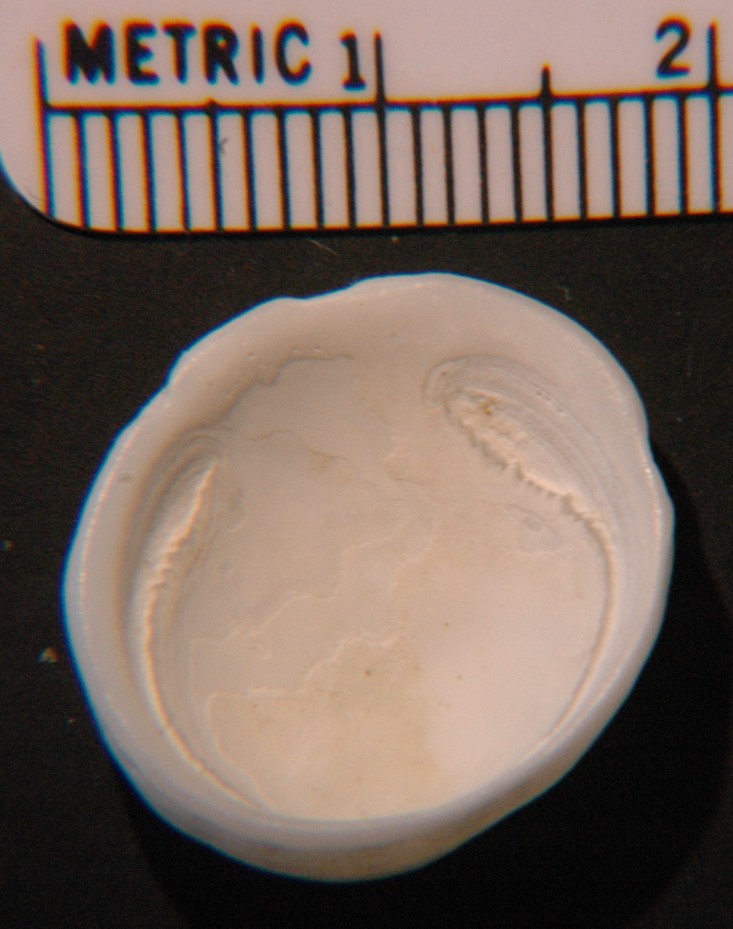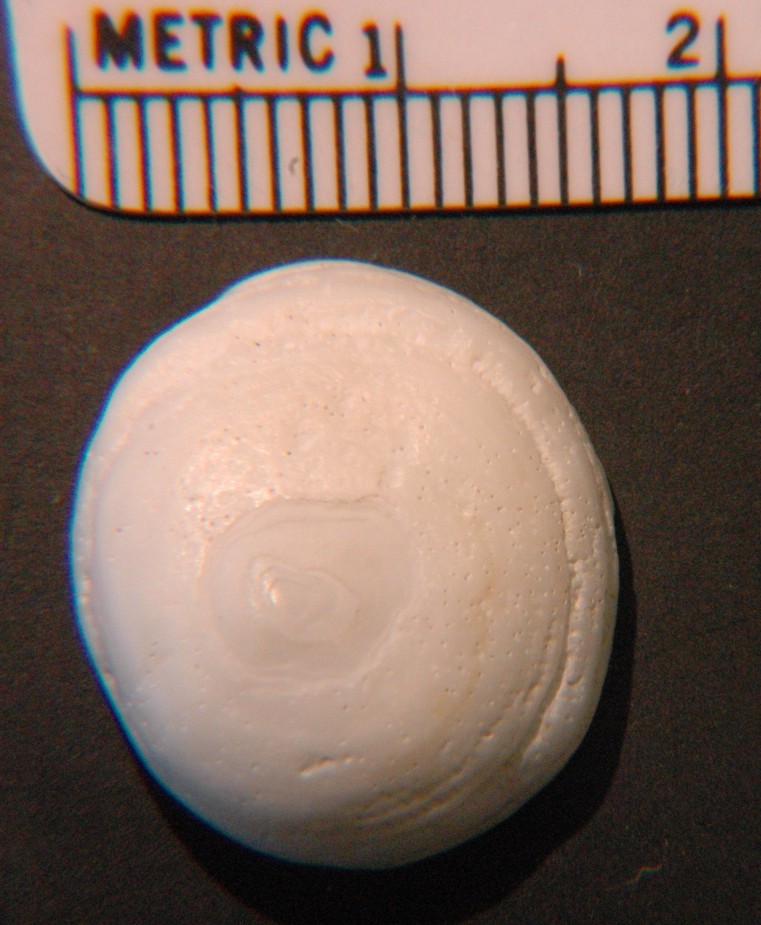How to Distinguish from Similar Species: This is the only local native species of gastropod that has the apex well behind the center of the shell. Another member of this family, Sabia conica, from the Western Pacific, is found locally as an introduced species in British Columbia. Farther south and on Table Island north of Vancouver Island, Hipponix tumens, which has strong radial ridges, a periostracum of fine hairs, and the apex overhangs the posterior margin can be found. H. tumens grows to 1.5 cm diameter.
Geographical Range: Vancouver Island to Baja California (perhaps to Panama or Peru); most common in California.
Depth Range: Intertidal and shallow subtidal
Habitat: On rocks on the open coast, occasionally attached to other shells. Often found in the burrows of piddock clams.
Biology/Natural History: Sessile as adults. The foot secretes a calcareous base on the rock and adheres to it like a "ventral valve". The shell fits tightly to the margins of the base so the animal can close tightly. Individuals of this species are often found in aggregations. Commonly found on the underside of overhangs or in crevices, especially in areas of heavy surf or subtidally. Easily overlooked. Males in a cluster tend to be smaller than females, so the species may be a protandric hermaphrodite. Females brood their eggs under the shell, and brooding females seem to be present year-round. The young hatch as creeping juveniles. The species feeds by extending a long, movable proboscis and dragging back fragments of detritus and coralline algae.
| Return to: | |||
| Main Page | Alphabetic Index | Systematic Index | Glossary |
References:
Dichotomous Keys:Flora and Fairbanks, 1966 (As Hipponix antiquatus)
Kozloff 1987, 1996
Smith and Carlton, 1975
General References:
Harbo,
1997
Hinton,
1987
Johnson
and Snook, 1955 (as Hipponix antiquatus)
Kozloff,
1993
Morris,
1966 (as Hipponix antiquatus)
Morris
et al., 1980
Scientific
Articles:
Reitzel, AM; Miner, BG; and McEdward, LR,
2004. Relationships
between spawning date and larval development time for benthic marine
invertebrates:
a modeling approach. Marine Ecology Progress Series
280: 13-23
Sagarin, Raphael D., James P. Barry, Sarah E. Gilman, and Charles H. Baxter, 1999. Climate-Related Change in an Intertidal Community over Short and Long Time Scales. Ecological Monographs 69(4): 465-490
Valentine, James W., 1980. Camalu: A Pleistocene Terrace Fauna from Baja California. Journal of Paleontology 54(6): 1310-1318
Web sites:
General Notes and Observations: Locations, abundances, unusual behaviors:

In this inside view the apex can be
seen to be well behind
the center,
near the bottom of the picture. The head of the animal would
be in
the gap of the C-shaped scar.
Photo by Dave Cowles, July 2007
Authors and Editors of Page:
Dave Cowles (2007): Created original page
Jonathan Cowles (2007): Updated page with CSS
